Few visitors to the enchanted world of garden biodiversity capture the imagination quite like the hummingbird.
These tiny, iridescent jewels are nature’s living treasures, and luring them into your garden can be a fulfilling and delightful experience.
A botanical symphony, a compilation of the best plants for hummingbirds, will transform your garden into a vibrant tapestry of colors and buzzing wings.
Curating a haven that beckons these avian wonders requires careful consideration when choosing plants.
Top 8 Best Plants for Hummingbirds
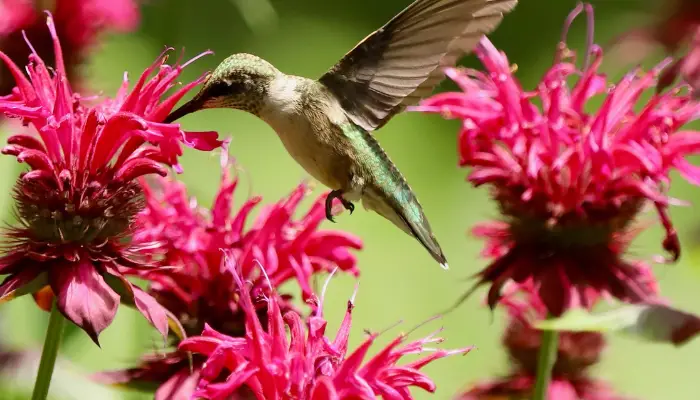
1. Salvia splendens
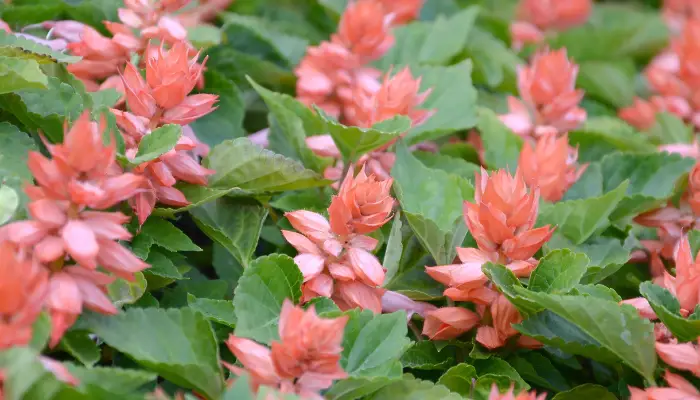
Salvia splendens is a brilliant red in the hummingbird’s vocabulary. Its tubular flowers, which resemble long trumpets, complement the slender bill of the hummingbird and act as a siren call, drawing hummingbirds in from a distance. Planting Scarlet Sage in clusters enhances the visual impact and offers a feast for these tiny aerial performers.
2. Penstemon ‘Husker Red’
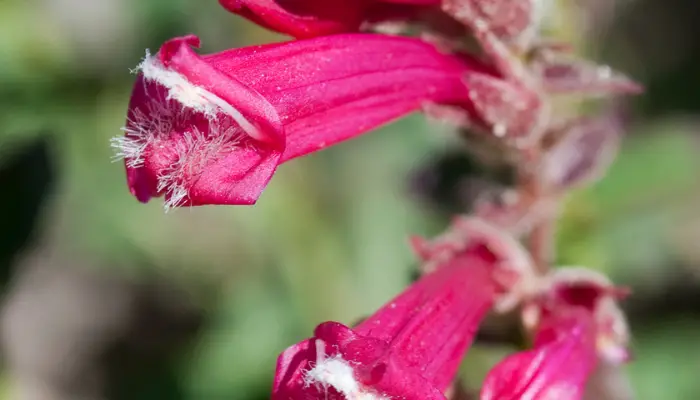
Penstemon ‘Husker Red,’ with its dramatic wine-red foliage and tubular pink flowers, is a towering sight in any garden, offering a sophisticated touch as well as a delicious nectar source for hummingbirds. Its upright form makes it a perfect choice for the rear of a flower bed, where hummingbirds can approach with grace and ease.
3. Agastache
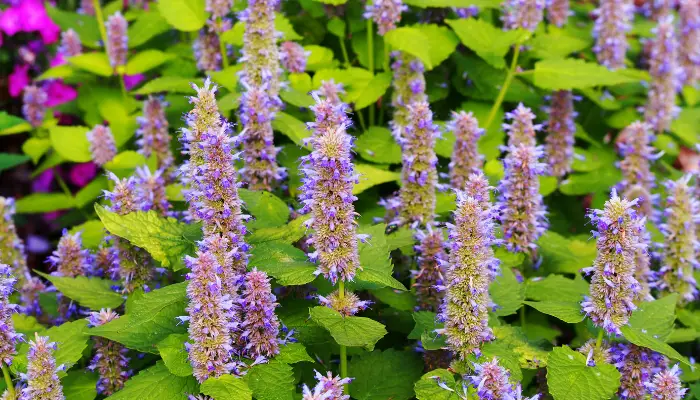
Agastache, also called hyssop, is a varied genus that includes a variety of species, each with their own distinct charm. Agastache is tubular flowers, which come in purple, pink, and orange, are like a feast for hummingbirds; they smell so good that they attract the birds with their sweet nectar. In addition, the fragrant foliage of Agastache adds yet another level of sensory delight to your garden.
4. Trumpet Honeysuckle
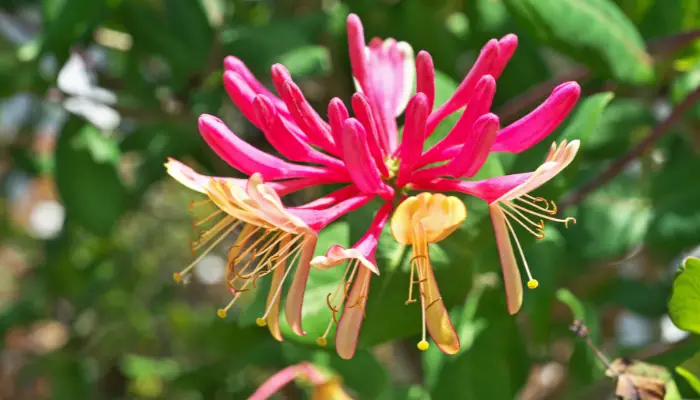
The Trumpet Honeysuckle, with its cascading vines and clusters of tubular, trumpet-shaped flowers, is a timeless favorite among hummingbird enthusiasts. The vibrant red or orange hues of the blossoms act as a visual beacon, guiding hummingbirds to their nectar-filled bounty. This native vine is not only a feast for the eyes but also a haven for hummingbirds seeking shelter and a place to rest.
5. Monarda
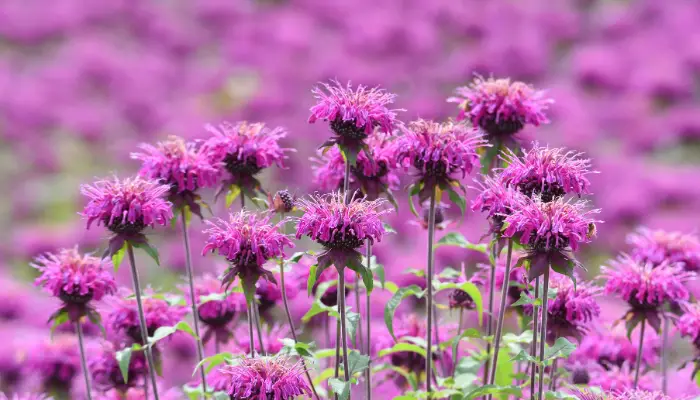
Monarda, or Bee Balm, is a show-stopper in any hummingbird-friendly garden. Its unusually shaped, spiky flowers in shades of red, pink, and purple make Bee Balm a veritable buffet for hummingbirds; the tubular structures of the blossoms provide the ideal shape for the hummingbird’s specialized bill, allowing them to extract every last drop of nectar; in addition, the fragrant foliage of Bee Balm deters unsolicited pests, benefiting the hummingbirds as well as the garden.
6. Fuchsia
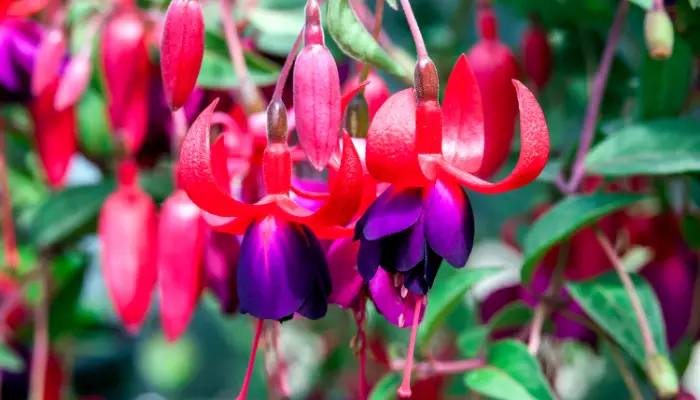
Hummingbirds are drawn to the visual spectacle of the pendulous flowers of Fuchsia, which dangle like delicate jewels from arching branches. The tubular shape of the blossoms is specifically designed to accommodate the feeding habits of hummingbirds. Fuchsia comes in a variety of color combinations and adds a touch of elegance and whimsy to any garden, making it both enchanting and welcoming to these delightful visitors.
7. Zauschneria

Zauschneria, also called California Fuchsia, embraces the fiery tones of orange and red. It is a drought-tolerant perennial that hums with the energy of a hummingbird’s wings; its tubular flowers serve as a beacon for these tiny guests, inviting them to join in the nectar feast. This hardy plant does best in sunny, well-drained environments, which makes it a great choice for xeriscape or arid gardens.
8. Lobelia cardinalis
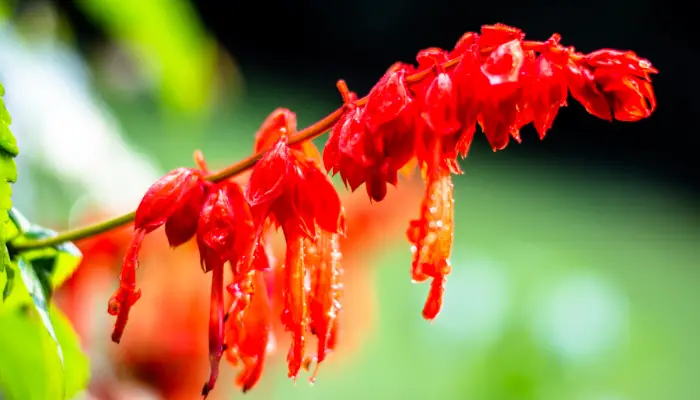
Lobelia cardinalis, named for the bright red robes worn by Catholic cardinals, is a native perennial that lives up to its name. This plant attracts hummingbirds with its tall spikes of tubular flowers that come in red, pink, or white. Because it prefers moist soils, it works well in gardens with water features, creating a lush, hummingbird-friendly oasis.
Summary
Hummingbirds are the elegant partners in the dance of flora and fauna, and when you plant your garden to support this symbiotic relationship, keep in mind that a variety of plants guarantee a continuous blooming season and a steady supply of nectar for these delightful visitors.
Plants like Scarlet Sage, Penstemon ‘Husker Red,’ Agastache, Trumpet Honeysuckle, Fuchsia, California Fuchsia, and Cardinal Flower will turn your garden into a sanctuary of color, scent, and the melodious hum of wings, providing a safe haven for both the gardener and the hummingbird.
FAQs About Attracting Hummingbirds with the Best Plants:
Q1: How do I create a hummingbird-friendly garden?
- A1: To create a hummingbird-friendly garden, focus on planting nectar-rich flowers with tubular shapes in vibrant colors like red, pink, and orange. Provide a variety of plants to ensure a continuous blooming season, and consider adding features like water sources and perches for these tiny avian visitors.
Q2: When is the best time to plant hummingbird-friendly plants?
- A2: Spring and early summer are ideal times to plant hummingbird-friendly plants. This allows the plants to establish their roots before the hummingbirds start their seasonal migrations. However, you can also plant in late summer or early fall for the following year.
Q3: What are some tips for maintaining a hummingbird garden?
- A3: Regularly deadhead flowers to encourage continuous blooming, and provide a water source for hummingbirds to drink and bathe. Additionally, avoid using pesticides, as they can harm both the hummingbirds and the plants they feed on.
Q4: How do I keep bees and wasps away from hummingbird feeders?
- A4: Choose hummingbird-friendly plants that are less attractive to bees and wasps. Additionally, place hummingbird feeders in shaded areas, as bees are less active in cooler conditions. Clean the feeders regularly to prevent fermentation, which can attract bees and wasps.
Q5: Are there specific plants that deter hummingbirds?
- A5: While hummingbirds have preferences, there aren’t plants that explicitly deter them. However, overly fragrant flowers or those with complex shapes may be less appealing. It’s best to provide a diverse array of nectar-rich plants to attract a variety of hummingbird species.
Q6: Can I attract hummingbirds to a container garden?
- A6: Absolutely! Choose compact and container-friendly hummingbird plants like Fuchsia, Salvia, or Penstemon. Ensure the containers have good drainage, use quality potting mix, and place them in locations that receive adequate sunlight.
Q7: How do I identify hummingbirds in my garden?
- A7: Hummingbirds are often identified by their small size, rapid wing beats, and iridescent plumage. Common species include the Ruby-throated, Anna’s, and Black-chinned hummingbirds, each with distinct markings. Binoculars and field guides can aid in identification.
Q8: Are there any specific fertilizers for hummingbird plants?
- A8: Use a balanced, all-purpose fertilizer, and avoid excessive nitrogen, as it promotes foliage growth over flower production. Organic options like compost or well-rotted manure can also enhance soil fertility.
Q9: Can I attract hummingbirds without using feeders?
- A9: Absolutely. While feeders can supplement their diet, planting a diverse array of nectar-rich flowers is the most natural and sustainable way to attract hummingbirds. This approach also provides a healthier and more varied diet for these tiny avian visitors.
Q10: How do I protect hummingbirds during extreme weather conditions?
- A10: During hot weather, ensure there’s a consistent water source for drinking and bathing. In colder climates, plant evergreen species like Trumpet Honeysuckle or provide windbreaks to shield the garden. Avoid using pesticides that can be harmful during extreme weather conditions.


